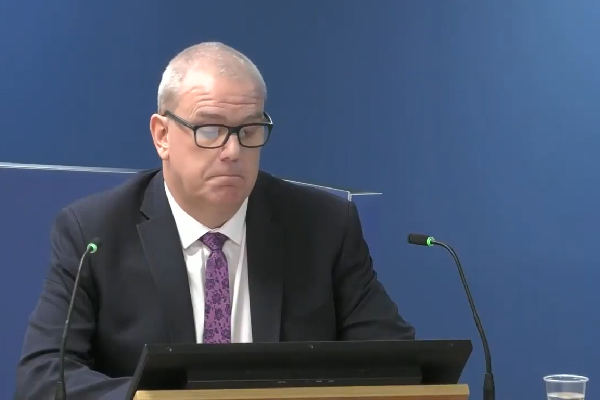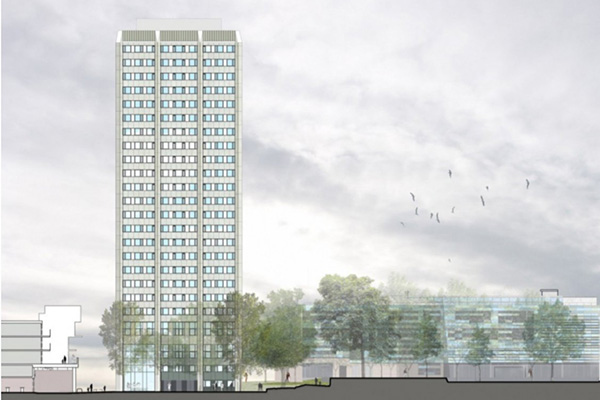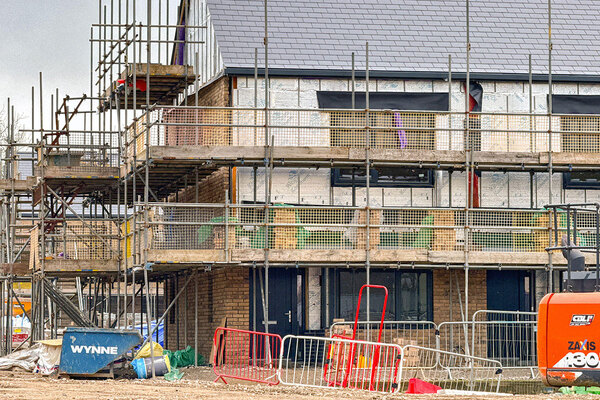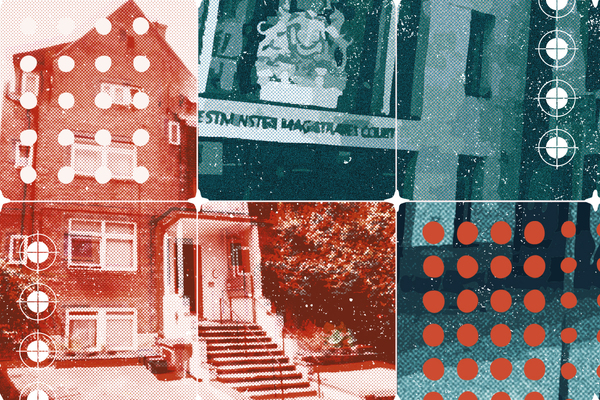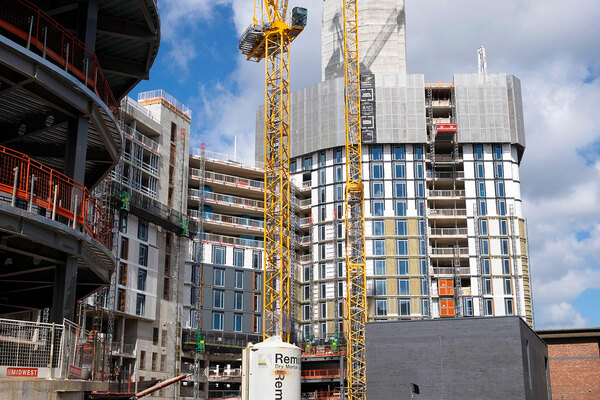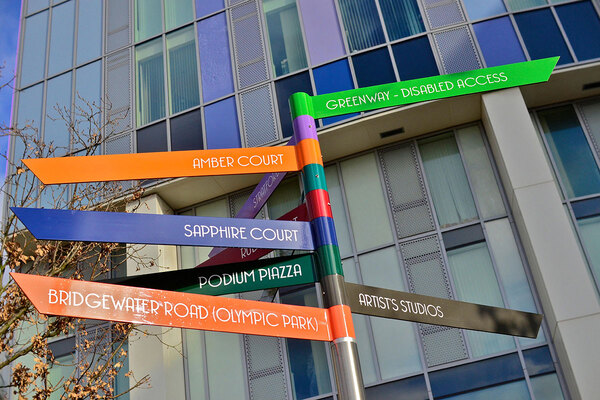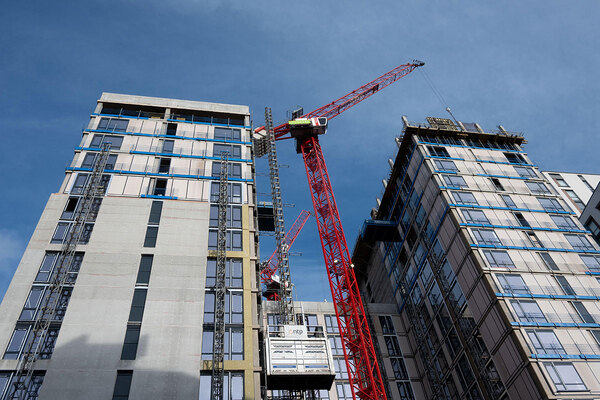Grenfell Tower Inquiry diary week 69: ‘It was just unthinkable, you had the makings here of a crisis that you simply couldn’t conceive of’
This week, civil servant Brian Martin gave his long-awaited evidence to the Grenfell Tower Inquiry. Peter Apps reports
Brian Martin is a name that has come up frequently over the course of more than 250 days of evidence to the Grenfell Tower Inquiry.
As the man responsible for the crucial building regulations guidance on fire safety contained in Approved Document B for almost 20 years by the time of the Grenfell Tower fire, he faces many difficult questions about what the guidance did and did not say.
This week we tracked the specific failure to do more to ban the highly combustible aluminium composite material (ACM) cladding used on Grenfell in the years before the blaze, despite repeated, specific warnings.
‘One gets the sense that there’s some sort of problem about coming clean with government and telling them that Class 0 was a problem’
Following two major cladding fires in the 1990s, discussed with Mr Martin last week, the government decided to introduce a large-scale testing system to assess the fire performance of cladding systems.
The Building Research Establishment (BRE) had already designed this test methodology, but needed to do further work to road-test it and establish an appropriate pass/fail criteria.
The BRE was contracted by government to carry out a “comprehensive survey” of the UK’s housing stock to establish typical cladding build-ups and then subject them to the fire test.
At this point Mr Martin was on both sides: employed by the BRE, but seconded to government for two to three days a week to assist with work on Approved Document B.
The survey took the form of a questionnaire. The BRE sent out 45, receiving just 13 full responses – nine from local authorities and four from suppliers.
“Can you tell us how it could be that the BRE and government could gain a proper and comprehensive understanding of the current industry practice in relation to the overcladding of high-rise building stock in the UK when you only had 13 responses?” asked Richard Millett QC, counsel to the inquiry.
Mr Martin said that the survey was “clearly not sufficient” but that it was decided “not to commit more resources” trying to get more information.
“It was just a question of sending an email or licking envelopes and putting a stamp on it, no?” Mr Millett asked.
“That’s not free,” replied Mr Martin.
One of the survey responses, from engineering firm WS Atkin, noted that it had experience of “spread of flames, generally rapid due to loss of integrity of composite aluminium panels using combustible cores”.
“Did you or anybody else contact WS Atkins to discover what the composite aluminium panels using combustible cores were?” asked Mr Millett.
“No, I wish we had,” replied Mr Martin.
ACM cladding with a polyethylene core was also identified from suppliers’ data in trade journals, and was included as one of 14 large-scale tests set up to help establish the pass/fail criteria.
This test – carried out on 18 July 2001 – has already been discussed at length during this module of the inquiry. It was a devastating, catastrophic failure, which sent 20-metre-high flames roaring above the top of the nine-metre test rig and was halted less than six minutes into its 30-minute duration for the safety of those present.
Mr Martin confirmed that he was made aware of this test. He said that his BRE colleague, Dr Sarah Colwell, walked into the office where he was working, showed him a slab of ACM and explained how the aluminium had melted away, exposing the highly combustible polyethylene.
“Did she tell you she was shocked by what she saw?” asked Mr Millett.
“My recollection is that the conversation was [that] it was an interesting outcome,” said Mr Martin.
The BRE reported the results of its testing to government in September 2002. Its report noted that the ACM had “proved to be one of the worst-performing products”.
But it also said something that should have been very alarming: the cladding product had “satisfied Class 0 requirements”. This meant that its use was compliant with Approved Document B, as it stood at the time.
But the BRE’s report did not make a particularly big deal of what – on its face – was a startling risk to life. It merely said that “as the current guidance in Approved Document B asks for Class 0 performance… these issues may require further consideration”.
“Why was this recommendation expressed in such feeble terms?” asked Mr Millett.
“I don’t know,” replied Mr Martin.
“One gets the slight sense, Mr Martin, that there’s some sort of problem about coming clean with government and telling them that Class 0 was a problem,” said Mr Millett.
“No. I don’t believe anyone at the department or anyone at BRE would have deliberately concealed this,” he said.
There were no changes to the guidance at this point to address the problem. In fact, the Class 0 standard was only removed from Approved Document B in December 2018 – 18 months after the Grenfell Tower fire.
This is all the more difficult to explain when you consider that a “harmonisation” exercise happening at the same time was supposed to replace Class 0 with tougher European standards, and a select committee examining the risk of cladding fires in 1999 had recommended ditching the standard.
“What possible reason was there for government, in whose offices you sat half the week, not acting on the advice there, oblique though it may have been?” asked Mr Millett.
“At that time, I don’t think there would have been any reason not to act on it, and again, this sounds awful, but I think it just got missed,” Mr Martin said.
We have seen previously that a host of industry representatives lobbied in favour of keeping the standard at around this time, warning that removing it would make it harder to sell their products.
‘So this was really more about keeping it under the radar so that people wouldn’t make a fuss about it?’
On 6 January 2005, fire tore through a tower block called The Edge in Manchester. The fire ripped up 17 storeys in 10 minutes, spread along the roof and began to move down the building.
The building was only partially occupied at the time of the blaze, but the local fire service warned of “grave concerns” that a similar fire could put “the lives of occupants at risk”.
The fire spread through decorative ‘sandwich panels’ on the exterior of the building, which were made of aluminium held together with polystyrene foam insulation.
Once more, these panels, despite their devastating performance in the fire, were Class 0 rated – and therefore compliant with Approved Document B.
Mr Martin, still employed by BRE at the time, was actively working on a major review of the document. He recognised that it needed to change.
In an email 12 days after the fire, he wrote that Approved Document B was “in need of clarification” because “changes in construction practice” had “circumvented” the “intent of the original guidance”.
He attached some suggested wording to the email, which would have revised the relevant passage to require all external wall products to be “materials of limited combustibility”. This was a much higher standard than Class 0 and would essentially ban everything combustible.
But Mr Martin also said that this draft “still needs some work” because it would have banned things such as timber-framed construction.
The government released a consultation document on the proposed changes in July 2005. But this document was silent on the question of how to deal with this problem of external fire spread exemplified by the fire at The Edge.
“Why didn’t that happen?” asked Mr Millett.
“It was difficult to insert a new piece of subject matter without falling foul of various government processes, which would have delayed the publication of the consultation,” Mr Martin said.
Despite not raising the issue, it was addressed in a response by the National House Building Council (NHBC), which mentioned the risk from “metal cladding panels that use polystyrene as a filler”.
As a result of this, Mr Martin helped to redraft Paragraph 12.7 of Approved Document B – which was headed ‘insulation materials/products’ – to say that it also covered “filler materials etc” and required them to be of ‘limited combustibility’.
An enormous amount turns on the meaning of these words. Because Mr Martin also left in the previous passage, which required a Class 0 standard for the external surfaces of walls.
He has now claimed that “filler” was supposed to apply to the core of any composite cladding panel, meaning that from this day forward, cladding like ACM should not have been used on high rises.
But it has never been clear what the word ‘filler’ actually meant. Many in the industry, including some of the inquiry’s expert witnesses, say they took it to mean ‘Polyfilla’ materials used to plug up gaps.
Mr Millett memorably illustrated this point by bringing a can of Polyfilla to the inquiry and brandishing it at Mr Martin (pictured above).
“Did anyone think: well, filler could be thought of as that?” asked Mr Millett.
“I don’t think we thought that at the time, no,” said Mr Martin.
Another problem was that it was included in a paragraph marked ‘insulation/products’, which cladding panels are not.
“If you intended the text… to apply to any materials or products other than insulation, why did you put it under a paragraph headed ‘insulation materials/products’?” Mr Millett asked.
Mr Martin said he believed that the ‘/products’ in the title meant the paragraph applied to things other than insulation.
“I wish I could remember what was exactly in our minds at the time, other than that general statement that we were trying to be more broader,” he said.
Mr Martin included no definition of the word ‘filler’ in the guidance, despite an appendix specifically for definitions.
“The problem with producing definitions of terms is that you then find everybody argues about what the words in the definition mean. So if you’re trying to get people to think broadly, then a definition can be counterproductive,” he said.
He also made no reference to the change in a circular sent to the industry or a summary of the significant changes included in the guidance itself.
Mr Martin said the ‘filler’ change “didn’t come on the list” because the change was made “late in the process”.
“Wasn’t the simpler approach simply to have a new paragraph which was perhaps headed ‘core of external panels’, and required those to be of limited combustibility? What was the problem with doing that?” asked Mr Millett.
“I think there was a concern that by identifying a specific product in a very prescriptive way, that might fall foul of having not consulted specifically on that, and that there’s a risk of manufacturers challenging the department and you find yourself dealing with a judicial review,” replied Mr Martin.
Asked if this was therefore “really more about… keeping it under the radar” and making the change “sufficiently quietly that people wouldn’t make a fuss”, Mr Martin said: “I think there was a component of that in the thinking, yes.”
This would not be the last chance to make a clearer statement that dangerous cladding was banned before Grenfell. All of them would be missed.
‘You didn’t need to be The Almighty to know what was in your mind when you drafted these passages in 2006’
By 2013, Mr Martin was employed by government and had something approaching total responsibility for Approved Document B.
Tony Baker (pictured above), one of his former colleagues at the BRE, emailed him on 25 November 2013 to ask about the passages containing the word “filler”.
He noted that “a debate has opened up within the industry” about the precise meaning of the word and asked Mr Martin for a definition.
He replied half an hour later. In the email, he referred to the fire at The Edge, and said that cladding panels all made of the same material (such as timber or high-pressure laminate) should be Class 0 rated, but that for composite panels, the core was required to be of limited combustibility.
“I’m thinking out loud here,” he wrote. “Does this make sense?”
“Your response… tends to suggest that you’d never actually thought about this question before; is that right?” asked Mr Millett.
“Perhaps not in the terms that was being talked about here,” said Mr Martin, adding that “a long period of time” had elapsed since the changes were made and that he did not have “God-like knowledge of every form of construction”.
“Yes, but you didn’t need to be The Almighty to know what was in your mind when you drafted [these passages] in 2006,” said Mr Millett.
“Yes, and I have said what was in my mind and I was testing with them here,” replied Mr Martin.
Mr Millett suggested that the exchange demonstrated the mistake Mr Martin had made by not being clearer in the guidance. “I mean, looking at it candidly, Mr Martin, was this not the chickens coming home to roost?”
“I didn’t see it like that at the time,” he replied.
“Did it occur to you at that stage that a lack of general understanding, even within the BRE, might have led to the emergence of non-compliant practices in industry?
“No, I didn’t see that as being a major problem at the time,” said Mr Martin, adding that this was evidence of “exactly the discussions that we wanted people to have”.
Asked if he “regarded [Approved Document B] as really a sort of discussion document, something to provoke debate, thoughts, interest rather than being a guide on how to comply” with building regulations, Mr Martin said: “I think it sits somewhere twixt the two.”
‘Would that not tend to suggest that your intention had been wholly misunderstood by the cladding industry?’
In July 2014, Mr Martin attended a meeting organised by a group called the Centre for Window and Cladding Technology (CWCT).
Minutes of this meeting, first obtained by Inside Housing in 2018, show that a range of attendees – representing senior expert figures in the facade industry – raised the use of ACM on tall buildings in the UK.
Minutes record that after referring to a series of global fires involving the product, they said that “the material generally achieves a reaction to fire classification of Class 0”.
Mr Martin had left the meeting before this discussion, but was sent the minutes and accepted having read them.
“Did it occur to you that that might mean that ACM with a 100% polyethylene core was being used on high-rise buildings on a regular basis in the United Kingdom?” asked Mr Millett.
“No,” replied Mr Martin.
“Well, what would you have understood by the title ‘Use of ACM on high-rise buildings’?” asked Mr Millett.
Mr Martin said he would have “read all the paragraphs”, not just the heading, and insisted that they “don’t directly say that”.
“I probably didn’t pay that much attention to this,” he added.
The minutes note that while “it was stated” that Approved Document B is “intended to prohibit” the use of such panels, “this is not clear” – given that the requirement for limited combustibility was in a paragraph headed “insulation materials/products”.
Asked if this alerted him to the fact that his guidance was being misunderstood, Mr Martin said it did not. He did not check with the attendees to follow up on their understanding of the guidance.
“Is the position that you simply didn’t ask or bother about it, or was the position that you knew about this or had an inkling of it, but didn’t like the idea that there were these discordant voices and chose to ignore them?” asked Mr Martin.
“I didn’t choose to ignore it, it just wasn’t something that… was at the forefront of my mind,” he said.
Mr Martin was also shown CWCT guidance from the time, which had been written by “a pretty heavyweight” team of experts. Nowhere in the guidance was any reference made to the phrase ‘filler material’ or a requirement that it have ‘limited combustibility’.
“Would that not tend to suggest that your intention in putting the words ‘filler material’… had been wholly misunderstood by the cladding industry?” asked Mr Millett.
“I think I understand that now,” said Mr Martin.
“The only reason you didn’t understand it then was because you hadn’t read the document, yes?” asked Mr Millett.
“Yes. But, as I say, there are dozens, if not hundreds of documents like this,” said Mr Martin.
The minutes of the July 2014 meeting add that Dr Colwell, of the BRE, had agreed to draft a ‘frequently asked question’ to clarify this issue, for Mr Martin to publish.
As the inquiry has previously seen, this never happened.
Mr Martin accepted that publishing an FAQ would not have been “unreasonable… or disproportionately difficult”. Asked why he did not chase it up, he said: “I think this was a busy time for us, and I think I probably forgot about it is the honest answer.”
‘Do you accept that you lulled him and others reading this into a false sense of security?’
Throughout this period, Mr Martin received several emails about the real-world risk of ACM cladding.
In May 2012, a fire tore through a block clad with ACM in Roubaix, France.
Mr Martin emailed colleagues in the department about it. “This wouldn’t be in accordance with Building Regs (probably),” he wrote.
In December 2012, a cladding consultant emailed him regarding the fire at Tamweel Tower in Dubai, which tore through the 34-storey building from the ground to the roof in minutes.
Asked by a colleague if he was aware of it, Mr Martin replied: “Yes − have you seen the video? It’s awesome.”
Then in February 2015, the government’s chief fire and rescue advisor Peter Holland emailed regarding yet another fire – this time at The Torch tower in Dubai.
Mr Martin replied: “There are provisions in the building regulations designed to prevent this kind of problem, so this shouldn’t be a problem in the UK. There are, of course, no guarantees.”
He did not mention the meeting in July 2014, and the requested ‘FAQ’, which he had not produced.
Mr Martin told the inquiry that it would have been “better” to “bring that more to the front than perhaps I did at the time”.
Mr Millet said: “But it’s worse, isn’t it, because by not doing that, do you accept that you lulled him and others reading this into a false sense of security?”
Mr Martin accepted that this was “perhaps a fair accusation”.
And a year later, in January 2016, the issue arose again, with yet another fire in the Middle East. This time, Mr Martin candidly explained the risk to colleagues: “Sadly when it gets exposed to a fire the aluminium melts away and exposes the polyethylene core. Whoosh!”
But he again reassured that the product was unlikely to be used in the UK. “The polyethylene core of the offending product would be considered as a filler material so should not be used over 18m.”
How could he say this, given the confusion he had heard about – which now included a further email exchange with a senior figure at the UK’s largest building control inspector the NHBC?
“I think I probably should have said to Mr [Bob] Ledsome that there’s some disagreement over this, and I regret that I didn’t do so,” said Mr Martin.
“Well, why didn’t you do that?” asked Mr Millett.
“I don’t know,” he replied.
We have already seen that just weeks later, Mr Martin was expressly warned by a cladding supplier that the number of tall buildings in the UK with ACM on their walls was “many and growing” – one of which, we now know, was Grenfell Tower.
His colleagues at the department have said that he never escalated this “red alert” email to them and it would have triggered urgent action if he had.
He will be asked about this when he returns on Monday.
‘The use of [ACM] would be in contravention of building regulations guidance − and is effectively “banned”’
After the fire, the government insisted that the use of the cladding on Grenfell Tower was “banned” by Approved Document B.
This was based on Mr Martin’s ‘filler’ argument – which was included in the footnote of a letter sent out to industry by the department just days after the fire by permanent secretary Dame Melanie Dawes (pictured above).
This week, we got some insight into Mr Martin’s involvement in this.
In a briefing note titled ‘urgent expert advice’, which he sent to senior figures in the department on Friday 16 June 2017 – just two days after the Grenfell Tower fire – he wrote: “The use of the non-fire-retardant panel as a cladding material for buildings over 18m (six storeys) would be in contravention of building regulations guidance − and is effectively ‘banned’.”
He mentioned nothing about the controversy surrounding this interpretation or the warnings he had received. The line would be repeated days later by then-chancellor Philip Hammond during a BBC interview and reported across the media.
Mr Martin had also told the inquiry earlier that Approved Document B did not specifically ban individual products.
Asked how he could “reconcile” this with the advice he gave ministers after the fire, he said: “I think the term ‘banned’ was something that was being used quite widely in the senior part of the department, whether that was senior officials or ministers, and so this was a very shorthand way of talking about that.”
‘The mantra of the department was about saying it should be the industry that led on these issues with minimum government intervention’
ACM cladding is not all that was discussed with Mr Martin this week. Among several other issues, we also heard his views on an email he sent in July 2014 to the NHBC that issued a “friendly warning” about the use of combustible insulation on high-rise buildings.
In the email, Mr Martin noted confusion about the insulation’s compliance and told the NHBC that it should not be signed off unless it was part of a system that had passed a large-scale test.
In response, Steve Evans, a senior technical manager at the NHBC (pictured above), gave Mr Martin a detailed explanation of an issue the inquiry has spent much time on previously – the widespread use of combustible Kingspan K15, based on an erroneous certificate from the British Board of Agrément that suggested it complied with requirements.
But the NHBC told Mr Martin that “there is no reason to suspect” that the buildings where it was installed were “at risk at this time”.
“It’s just the fact that testing carried out to date does not bear this out,” he wrote.
Mr Martin said he thought the “NHBC would have taken leadership” on the issue.
“NHBC would be able to react so much more quickly than we would. We were a tiny team. I can’t press a button and suddenly instigate a major investigation,” he said, adding that he was “very busy on another project”.
The inquiry saw that he emailed his seniors in the department to notify them of the issue, writing: “If it is a problem, some blocks may need to have their cladding replaced (possibly a lot of them).”
He said he was content to “wait and see what NHBC found”, which would “give us an indication of whether this was a major problem or not”.
“And what about the people living in these blocks in the meantime? Did you think about them?” asked Mr Millett.
“I guess I was worried, but at the time I thought this was the best approach,” said Mr Martin.
“Is it because it was just unthinkable, and you had the makings here of a crisis on your hands that you simply couldn’t conceive of?” asked Mr Millett.
“I don't think it was that. I think it was just this was a potential problem and we’d be getting more information soon,” said Mr Martin.
He added that relying on the NHBC to lead “really tied in with the way we’d come to work over the years”.
“We were encouraged to work with industry or industry bodies to resolve problems where we could,” he said.
This was a theme that came up regularly, particularly in regard to industry guidance issued in July 2014 that said all the materials used in a cladding system should be of “limited combustibility”.
Mr Martin accepted that this guidance “went further” than the standards set in Approved Document B on this point and “provided a much more straightforward and safer approach”.
Asked why he was content for it to be left to industry guidance to solve this problem, as opposed to a statement from government, he said: “The mantra of the department was very much about localism. It was about saying it should be the industry and local bodies that led on these issues with minimum government intervention.
“So that was how the department has been progressively behaving, right across the board, because of the fact that we were less people, less resources and less money… Getting other organisations to do this kind of thing is exactly what they wanted us to do.”
“Is it the case that you, as a result of that culture, didn’t think that you were the custodian of public safety? And these other organisations, NHBC, BCA, even the manufacturers, should take that off your hands. Was that your thinking?” asked Mr Millett.
“I think in part, yes. I think that was how we were encouraged to work,” said Mr Martin.
Indeed, this ‘small government’ philosophy extended to the very idea of regulating. As we have heard repeatedly from other witnesses, the government’s desire to limit “burdens on industry” meant it was difficult or impossible to secure support for new regulations.
It appears that Mr Martin bought into this philosophy to an extent. The inquiry saw emails from 2012 which showed him commenting that putting a prominent fire safety campaigner and former firefighter in charge of Approved Document B would not be in the interests of “UK plc”.
Asked what would happen if someone who placed “absolute priority on life safety” was given responsibility for fire safety guidance, Mr Martin said: “The country would be bankrupt. We’d all starve to death, I suppose, if you took it to its extreme,” replied Mr Martin. “That’s the policy conundrum governments are faced with: you need to balance the cost of regulation with its benefits.”
“So death by fire or death by starvation and that’s for the government to choose between?” asked Mr Millett.
“I don’t think anybody talked about it in those terms, but that’s the principle.” said Mr Martin.
The inquiry continues, with further evidence from Mr Martin next week, before five former ministers are called, beginning with current Northern Ireland secretary and former housing and fire minister Brandon Lewis on Wednesday.
Grenfell Tower Inquiry week 69: headlines
A government official who held responsibility for building safety guidance for more than 20 years told the Grenfell Tower Inquiry that the country would have “starved to death” if the rules were written by someone who gave “absolute priority to life safety”.
Government official ‘lulled seniors into false sense of security’ about risk of cladding fire before Grenfell
A government official has accepted he “lulled” his seniors into “a false sense of security” about the risk of a major cladding fire in the UK two years before the Grenfell Tower blaze.
Government official ‘forgot’ to issue clarification that Grenfell-style cladding was banned
The civil servant responsible for fire safety guidance did not issue a requested clarification confirming that the cladding later used on Grenfell Tower was banned because he “forgot”, he told the inquiry into the fire today.
Recommendation to review guidance following ‘catastrophic’ test on Grenfell-style cladding ‘just got missed’, says official
A recommendation to review fire standards following a “catastrophic” 2001 test on the cladding material later used on Grenfell Tower “just got missed”, the official formerly responsible for the guidance said today.
Sign up for our weekly Grenfell Inquiry newsletter
Each week we send out a newsletter rounding up the key news from the Grenfell Inquiry, along with the headlines from the week
Already have an account? Click here to manage your newsletters
Grenfell Tower Inquiry phase two: weekly diaries
Module one: the refurbishment
Week one: A vivid picture of a broken industry
After a week of damning revelations at the opening of phase two of the Grenfell Tower Inquiry, Peter Apps recaps the key points
Click here to read the full story
Week two: What is the significance of the immunity application?
Sir Martin Moore-Bick has written to the attorney general requesting protection for those set to give evidence at the Grenfell Tower Inquiry. Peter Apps explains what the move means
Click here to read the full story
Week three: Architects of misfortune
This week saw the lead architects for the Grenfell Tower refurbishment give evidence to the inquiry. Peter Apps runs through the key points
Click here to read the full story
Week four: ‘I didn’t have any perception that it was the monster it’s become’
The architects continued to give evidence this week, outlining a lack of understanding of the fire risk posed by the cladding materials and its design. Nathaniel Barker reports
Click here to read the full story
Week five: ‘No adverse effect in relation to external fire spread’
As the Grenfell Tower Inquiry returns from its long absence, Peter Apps recaps the key points from a week of important evidence from the fire consultants to the refurbishment
Click here to read the full story
Week six: ‘I can’t recall any instance where I discussed the materials with building control’
Nathaniel Barker summarises what we learned from fire engineers Exova, architects Studio E and the early evidence from contractor Rydon
Click here to read the full story
Week seven: ‘I do not think I have ever worked with a contractor operating with this level of nonchalance’
Two key witnesses from contractor Rydon gave evidence this week. Peter Apps recaps some of the key points from a revealing week of evidence
Click here to read the full story
Week eight: ‘It haunts me that it wasn't challenged’
Four witnesses from contractor Rydon gave evidence this week. Lucie Heath recaps what we learned on the last week of evidence before the inquiry breaks for five weeks
Click here to read the full story
Week nine: ‘All I can say is you will be taken out for a very nice meal very soon’
This week the inquiry heard evidence from witnesses at Harley Facades, the sub-contractor responsible for Grenfell Tower’s cladding. Peter Apps recaps the key points
Click here to read the full story
Week 10: ‘As we all know, ACM will be gone rather quickly in a fire!’
As the Grenfell Tower Inquiry entered its 10th week, Jack Simpson recaps the key points from a week of important evidence from the refurbishment’s cladding contractor
Click here to read the full story
Week 11: ‘Did you get the impression Grenfell Tower was a guinea pig for this insulation?’
With witnesses from the cladding subcontractor, the firm which cut the deadly panels to shape and the clerk of works which inspected the job giving evidence this was week full of revelations. Peter Apps recaps the key points
Click here to read the full story
Week 12: ‘Would you accept that was a serious failing on your part?’
With the surveyor who inspected Grenfell Tower for compliance giving evidence, this was a crucial week from the inquiry. Dominic Brady and Peter Apps report
Click here to read the full story
Week 13: ‘Value for money is to be regarded as the key driver for this project’
With consultants to Kensington & Chelsea Tenant Management Organisation (KCTMO) giving evidence, attention at the Grenfell Tower Inquiry turned for this first time to the actions of the TMO and the council. Peter Apps reports
Click here to read the full story
Week 14: ‘Did it not occur to you at this point that your budget was simply too low?’
This week, for the first time in phase two, the inquiry heard from Kensington & Chelsea Tenant Management Organisation, the landlord that oversaw the fatal refurbishment of Grenfell Tower. Lucie Heath reports
Click here to read the full story
Week 15: ‘Have you ever informed the police that you destroyed documents relevant to their investigation?’
Witnesses from the Kensington and Chelsea Tenant Management Organisation (KCTMO) gave evidence for a second week, which began with a shocking revelation about withheld and destroyed evidence. Peter Apps recaps
Click here to read the full story
Week 16: ‘I conclude this was very serious evidence of professional negligence’
This week saw members of Kensington & Chelsea Tenant Management Organisation finish giving evidence, before the inquiry’s expert witnesses took the stand to make some highly critical assessments of the work they had seen before and during the refurbishment of Grenfell Tower. Jack Simpson recaps
Click here to read the full story
Grenfell Tower: a timeline of the refurbishment
Following the conclusion of module one of the Grenfell Inquiry’s second phase, Peter Apps presents a timeline of the key moments during the fatal refurbishment of the west London tower block
Click here to read the full story
Module two: the cladding products
Week 17: ‘It’s hard to make a note about this because we are not clean’
The start of the second module of the Grenfell Tower Inquiry phase two came with some huge revelations about the companies that sold the products used in the cladding system. Peter Apps reports
Click here to read the full story
Week 18: ‘It was just reckless optimism wasn't it?’
As the inquiry began cross-examining witnesses for the second module of its phase two work, the picture surrounding just how Grenfell Tower ended up wrapped in such dangerous materials became a little clearer. Nathaniel Barker was keeping an eye on proceedings
Click here to read the full story
Week 19: ‘And that was intentional, deliberate, dishonest?’
The Grenfell Tower Inquiry this week heard the shocking story of how the insulation manufacturer “manipulated” official testing and marketed its product “dishonestly”. Peter Apps tells the story
Click here to read the full story
Week 20: ‘We were outed by a consultant who we then had to fabricate a story to’
This week the inquiry investigated the actions of Kingspan – the manufacturer of one of the insulation products used in the tower’s cladding system. Dominic Brady reports
Click here to read the full story
Week 21: ‘It’s there in black and white isn't it? We see a complete absence of any consideration of life safety’
The story of insulation giant Kingspan’s testing and marketing of its combustible insulation for high rises was unpacked in minute detail this week. Peter Apps reports
Click here to read the full story
Week 22: ‘All we do is lie in here’
In the third week of evidence from insulation giant Kingspan, the inquiry continued to uncover shocking details about the firm’s behaviour both before and after the Grenfell Tower fire. Lucie Heath reports
Click here to read the full story
Week 23: ‘That would have come as an earthquake to you at the time, would it not?’
This week the inquiry took its deepest dive yet into the inner workings of the cladding manufacturer whose product has been blamed for the terrible spread of fire up Grenfell Tower. Nathaniel Barker reports
Click here to read the full story
Week 24: ‘Do you accept that Test 5B was Arconic's deadly secret’
The president of the firm that made and sold the cladding panels installed on Grenfell Tower was asked to account for the apparent concealment of “disastrous” fire tests on the product this week. Peter Apps reports
Click here to read the full story
Week 25: ‘This is quite an incredible list of omissions and missed instances, isn’t it?’
This week the Grenfell Tower Inquiry heard its first witnesses from the Building Research Establishment (BRE) - the testing house which carried out key fire tests on the Kingspan and Celotex insulation products which were later used on Grenfell Tower. Peter Apps reports.
Click here to read the full story
Week 26: 'You were taking an enormous risk, weren't you?'
Week 26 at the Grenfell Tower Inquiry was a key moment in understanding how dangerous products used on the tower came to be accepted by industry professionals. Dominic Brady reports
Click here to read the full story
Week 27: ‘What will happen if one building made out [of] PE core is in fire and will kill 60 to 70 persons?’
The most explosive evidence this week at the Grenfell Tower Inquiry came from those who did not attend, as the evidence which would have been presented to Arconic witnesses was displayed in their absence. Peter Apps reports
Click here to read the full story
Week 28: ‘This is a serious safety matter’
This week the Grenfell Tower Inquiry zeroed in on the British Board of Agrément, the body that produced “misleading” certificates which inspired trust in both the cladding and insulation used on the tower. Lucie Heath reports
Click here to read the full story
Week 29: ‘Is it true that Kingspan’s position… was to do its best to ensure that science was secretly perverted for financial gain?’
The final week in this section of the Grenfell Tower Inquiry primarily examined the attempts by insulation manufacturer Kingspan to lobby government after the fire. Peter Apps reports
Click here to read the full story
How the products used in Grenfell Tower's cladding system were tested and sold
As the section of the Grenfell Tower Inquiry examining how the products used in the cladding system were tested, marketed and sold comes to a close, Peter Apps summarises what we have learned about each of the products included in the system
Click here to read the full story
Module Three: the management of the tower
Week 30: ‘There is certainly a high probability that in the event of a fire the whole building can become an inferno’
The focus of the inquiry shifted this week to the actions of the social housing providers responsible for maintaining Grenfell Tower. Pete Apps recaps what we learned
Click here to read the full story
Week 31: ‘If we cannot get out people will die’
This week saw the former residents of Grenfell Tower enter the witness box to tell of their experiences attempting to raise complaints with the council and its managing agent. Pete Apps reports
Click here to read the full story
Week 32: ‘Let's hope our luck holds and there isn't a fire’
This week saw the return of the landlord of Grenfell Tower, Kensington and Chelsea Tenant Management Organisation (KCTMO), as senior staff members attempted to explain how vital fire safety protections at the block were allowed to fall into disrepair. Lucie Heath reports
Click here to read the full story
Week 33: ‘Isn't that a serious gap in the scope of a policy meant to safeguard vulnerable people?’
A slightly disjointed week at the Grenfell Tower inquiry saw further evidence from staff at building manager Kensington and Chelsea Tenant Management Organisation (KCTMO) interspersed with the views of a cladding expert. Peter Apps reports
Click here to read the full story
Week 34: ‘Some members of the community are doing their best to spread false information’
Jack Simpson covers all the major revelations from the past week of evidence at the Grenfell Inquiry, including evidence from Laura Johnson, director of housing at the Royal Borough of Kensington and Chelsea.
Click here to read the full story
Week 35: ‘I really didn’t like the champagne’
This week the Grenfell Tower Inquiry saw council witnesses, including former deputy leader Rock Feilding-Mellen and leader Nicholas Paget-Brown, questioned about their role in the story for the first time. Peter Apps reports
Click here to read the full story
Week 36: ‘Is that not a very incurious approach for a fire risk assessor?’
This week the Grenfell Tower Inquiry scrutinised the work of Carl Stokes, the man hired to carry out fire risk assessments for the block. Nathaniel Barker reports
Click here to read the full story
Week 37: ‘In giving that advice, weren’t you acting beyond your knowledge and expertise?’
A curtailed week at the Grenfell Tower Inquiry saw fire risk assessor Carl Stokes grilled over advice he gave regarding the tower’s cladding. Peter Apps reports
Click here to read the full story
Week 38: ‘Well it’s a bit more than that, isn’t it. He’s suggesting that you tell the LFB a lie’
The inquiry heard the mammoth cross-examination of KCTMO’s health and safety manager Janice Wray this week. Peter Apps reports
Click here to read the full story
Week 39: ‘What you said there was a grotesque understatement’
This week the inquiry continued to hear from former employees of Kensington and Chelsea Tenant Management Organisation, as well as two employees from the London Fire Brigade. Lucie Heath reports
Click here to read the full story
Week 40: ‘An exercise in concealment and half-truth’
Former KCTMO chief executive Robert Black gave his evidence to the inquiry this week and was asked to account for the various failures described over the previous six weeks. Peter Apps and Nathaniel Barker report.
Click here to read the full story
Week 41: ‘We should do nothing. This is not the sort of website we should be responding to’
This week saw the return of Robert Black, chief executive of Kensington and Chelsea Tenant Management Organisation (KCTMO), before the inquiry turned its attention to the defective smoke control system in the tower. Dominic Brady reports
Click here to read the full story
Week 42:‘They would leak as much as they leaked. They were what they were’
The Grenfell Tower Inquiry continued its in-depth investigation of the tower’s non-compliant smoke control system this week, with evidence from the various contractors involved in delivering it. Pete Apps reports
Click here to read the full story
Week 43:‘Contractors at the time were not generally aware of the importance of leaving holes unsealed’
This week the inquiry focused on two of the more overlooked areas of the Grenfell Tower fire, with evidence focusing on the gas pipelines and lifts within the west London block. It was a packed week, with five witnesses giving evidence. Jack Simpson reports
Click here to read the full story
Week 44:‘I've never seen a fully compliant firefighting lift in any local authority building, to this day actually’
This week the inquiry turn the focus onto the building’s defective lifts, with evidence from an expert, contractors who worked on them and a former engineer at KCTMO. Pete Apps reports.
Click here to read the full story
Week 45: ‘Don’t you find all this rather a surprising debate, given that the Equality Act was passed in 2010?’
The inquiry heard from expert witness Colin Todd this week, who gave his views about the work of risk assessor Carl Stokes as well as answered questions about his own guidance. Peter Apps and Nathaniel Barker report
Click here to read the full story
Week 46: ‘I think I've been very, very clear that is completely wrong’
This week the inquiry heard further expert evidence about fire risk assessor Carl Stokes’ actions, as the section of its work covering the management and maintenance of the tower concluded. Peter Apps reports
Click here to read the full story
Six key failures in the way Grenfell Tower was managed before the fire
Peter Apps recaps some of what we have learned about the actions of the Royal Borough of Kensington and Chelsea (RBKC) and Kensington and Chelsea Tenant Management Organisation (KCTMO) in the years before the fire.
Module one and two closing statements
Week 47: ‘An unedifying spectacle’
After a week of closing statements from the core participants involved in modules one and two, Lucie Heath recaps the key arguments of each group
Click here to read the full story
Module five: the fire brigade
Week 48: ‘They knew, and lives could and should have been saved’
The phase of the Grenfell Tower Inquiry examining the actions of the London Fire Brigade in the years before the fire kicked off this week with some major revelations. Peter Apps reports
Click here to read the full story
Week 49: ‘I'm not sure we've always taken every opportunity to learn as an organisation’
How the London Fire Brigade acted upon lessons from incidents in the years before the Grenfell Tower disaster came under the microscope this week at the public inquiry. Nathaniel Barker reports
Click here to read the full story
Week 50: ‘There is a culture in LFB that is very conservative. I think there is great comfort in what is familiar’
This week the inquiry heard how the London Fire Brigade (LFB) elected not to issue warnings about dangerous cladding before Grenfell and a detailed examination of its policy for checking high risk buildings. Pete Apps reports.
Click here to read the full story
Week 51:‘We teach firefighters to expect building failure’
An unusually brief week of evidence at the Grenfell Tower Inquiry explored how a fire service neighbouring London was taking a different approach to tackling blazes in high rises. Nathaniel Barker reports
Click here to read the full story
Week 52: ‘I actually think that there is a measure of incompetence at all levels’
Expert evidence concluded the current section of the inquiry with some stinging criticism of the London Fire Brigade (LFB). Pete Apps and Grainne Cuffe report.
Click here to read the full story
Module six: fire services
Week 53: ‘They make for chilling reading and harrowing listening’
The inquiry’s investigation into central government began this week with lawyers setting out their view on how and why firefighting policies failed. Peter Apps and Lucie Heath report
Click here to read the full story
Week 54: ‘Our consideration of evacuation at this time was something of a blind spot’
The development of policy on ‘stay put’, both nationally and for London, occupied the attention of the inquiry this week. Peter Apps reports
Click here to read the full story
Week 55: ‘My review is pretty scathing!’
In a week that included the 200th day of evidence in phase two of the inquiry, attention turned to the London Fire Brigade’s control room. Lucie Heath reports
Click here to read the full story
Week 56: ‘Why didn't we thump the table harder’
This week, the control room at the London Fire Brigade was examined further – both before and after the fire. Pete Apps and Lucie Heath report
Click here to read the full story
Week 57: ‘It was worse than slow, it was sluggish’
Former London Fire Brigade (LFB) commissioner Dany Cotton was the star witness this week, as the inquiry continued to delve into the brigade’s knowledge and training before the Grenfell Tower fire. Jack Simpson, Grainne Cuffe and Pete Apps report
Click here to read the full story
Week 58: ‘I don't think we deserve to ask for trust until we demonstrate different outcomes’
A current and former commissioner of the London Fire Brigade (LFB) wrapped up the inquiry’s investigation into the actions of the brigade before the fire. Grainne Cuffe and Peter Apps report.
Module six: testing and government
One of the major scandals of our time: key revelations as the Grenfell Tower Inquiry turns to government
The government was accused of “covering up” the risks of dangerous cladding as its “unbridled passion for deregulation” left it a “junior party” to the construction industry as the latest phase of the public inquiry opened today. Peter Apps summarises some of the main points
Click here to read the full story
Week 59: ‘Recent tests have apparently shown it continued to burn for 20 minutes after the flame was taken away’
After shocking opening statements, the Grenfell Tower Inquiry turned its attention to the work of Local Authority Building Control. Pete Apps reports
Click here to read the full story
Week 60: ‘You could have an exact repeat of the Dubai fire in any number of buildings in London’
The Grenfell Tower Inquiry turned its attention to the work of the National House Building Council this week, with shocking revelations about the extent of the warnings issued to central government before the fire. Peter Apps reports
Click here to read the full story
Week 61: ‘Mistakes are meant for learning, not repeating’
In the first hearings of the new year, the Grenfell Tower Inquiry heard closing statements from the firefighting section of phase two. Lucie Heath reports
Click here to read the full story
Week 62: Did it ever occur to you that this act of collaboration was, in one sense, corrupting?
The Grenfell Tower Inquiry returned to the work of the National House Building Council (NHBC) this week, with a new shocking revelation about the government’s actions in the immediate aftermath of the fire. Peter Apps reports
Click here to read the full story
Week 63: ‘It came after the general move to deregulation. So more regulation was not welcome’
The government’s focus on deregulation before the Grenfell Tower fire was placed in the spotlight this week with a series of shocking revelations about its failure to amend fire safety guidance. Pete Apps and Grainne Cuffe report
Click here to read the full story
Week 64: ‘I didn’t think ACM would be suitable for use in any high-rise buildings. I don’t think anyone did’
This week, the Building Research Establishment’s Dr Sarah Colwell gave more than three days of evidence, with some huge revelations about what was known about the dangers of aluminium composite material years before the fire and the mass confusion over the government’s building regulations. Peter Apps and Jack Simpson report
Click here to read the full story
Week 65: ‘Unless the government does something now about ACM panels, people will die’
Further evidence from the Building Research Establishment and the first government witnesses added new depth to our understanding of how warnings were missed before the Grenfell Tower fire. Peter Apps reports
Click here to read the full story
Week 66: ‘Was there a cover-up?’
The latest evidence from the Grenfell Tower Inquiry tracked the government’s failure to act on fire safety warnings right up until the months before the fire. Peter Apps and Grainne Cuffe report
Click here to read the full story
Week 67: ‘When exposed to a fire, the aluminium melts away and exposes the polyethylene. Whoosh!’
This week the inquiry heard disturbing new evidence about the failure of senior government officials to act on warnings about dangerous cladding in the years before the Grenfell Tower fire. Peter Apps reports
Click here to read the full story
Week 68: ‘Can we agree that was a pretty dangerous thing to have, all this falling on one man’s shoulders?’
Three senior civil servants gave evidence this week, including the official who had responsibility for building regulations guidance on fire safety in the years before Grenfell. Peter Apps, Lucie Heath, Stephen Delahunty and Grainne Cuffe report
Click here to read the full story
Week 69: ‘It was just unthinkable. You had the makings here of a crisis you could not comprehend’
This week, civil servant Brian Martin gave his long-awaited evidence to the Grenfell Tower Inquiry. Peter Apps reports
Click here to read the full story
Week 70: ‘Show me the bodies’
An important week at the Grenfell Tower Inquiry saw a dramatic conclusion to the mammoth cross-examination of civil servant Brian Martin, as well as the first politicians. Peter Apps and Lucie Heath report
Click here to read the full story
Week 71: ‘I have changed my schedule to fit this in. I do have an extremely busy day meeting people’
Three politicians who were responsible for building regulations before Grenfell appeared before the inquiry this week, including the former communities secretary Eric Pickles, who responded to the coroner’s letter following the Lakanal House fire. Peter Apps and Lucie Heath report
Click here to read the full story
Module Four: aftermath
Week 72: 'The system isn't broken. It was built this way'
This week the inquiry turned to the shocking story of the lack of support for bereaved and survivors in the immediate aftermath of the Grenfell Tower fire. Peter Apps, Lucie Heath, Grainne Cuffe and Jack Simpson report
Click here to read the full story
Week 73: ‘Most people would regard that as hopeless’
This week, the Grenfell Tower Inquiry heard about the Royal Borough of Kensington and Chelsea’s chaotic response in the immediate aftermath of the blaze, from the staff responsible for it. Pete Apps, Stephen Delahunty and Grainne Cuffe report
Click here to read the full story
Week 74: ‘Do you agree that RBKC was ill-prepared and incapable to meet its duties’
This week, Nicholas Holgate, former chief executive of the Royal Borough of Kensington and Chelsea, was grilled on his failure to hand over control of the aftermath of the fire, despite the borough’s lack of capacity. Peter Apps reports
Click here to read the full story
Week 75: ‘It still shocks me to the core that that’s how we treat our citizens in this country’
This week the inquiry heard witnesses from the housing management body discuss their role in the aftermath of the Grenfell Tower fire, followed by a range of witnesses from other organisations which supported the response. Peter Apps and Grainne Cuffe report
Click here to read the full story
Week 76: ‘I fear this will become our New Orleans’
This week the inquiry heard from central government figures and members of the London-wide emergency response arrangements. Peter Apps and Grainne Cuffe report
Click here to read the full story
Week 77: ‘The planning wasn’t done and there was nothing for us to be drawing on’
The Grenfell Tower Inquiry’s examination of the aftermath of the fire concluded with witnesses from central government. Peter Apps reports
Click here to read the full story
Module seven: expert evidence and closing statements
Week 78: ‘The abandonment of the ‘stay put’ strategy for high-rise residential buildings is essential’
This week the Grenfell Tower Inquiry heard a range of expert witnesses discuss their reports. Peter Apps and Grainne Cuffe report
Click here to read the full story
Week 79: ‘You could argue the system was created to enable people to circumvent the rules’
The Grenfell Tower Inquiry continued to hear expert evidence this week, with two senior figures in the world of fire safety academia criticising the government’s approach before and after the blaze. Peter Apps and Grainne Cuffe report
Click here to read the full story
Week 80: ‘The evidence points to wilful blindness and complacency towards safety’
As the inquiry moves into its final stages, lawyers for the key players gave statements about the evidence surrounding central government. Peter Apps reports
Click here to read the full story
Week 81: ‘This is Islamophobia. It’s racism. It is the elephant staring back at us in the room’
This week, closing statements covering the aftermath of the fire delivered a shocking new revelation and an expert toxicologist gave his views on the causes of the deaths. Peter Apps reports
Click here to read the full story
Module eight: further evidence relating to the deceased
Week 82: ‘Their chance to hear about the circumstances in which their loved ones died is the culmination of five years of waiting’
The Grenfell Tower Inquiry moved into its final module this week, with evidence relating to the circumstances in which the victims died. Peter Apps reports
Click here to read the full story
Week 83: ‘They died together as they lived: caring for one another’
A second week of evidence relating to the circumstances in which the victims of the fire died delivered more heartbreaking stories about their final moments. Peter Apps recaps
Click here to read the full story
Week 84: ‘Every decision affects someone who is an adored child, a beloved sister, a respected uncle, a needed mother’
The final week of oral evidence for the Grenfell Tower Inquiry’s second phase contained more heartbreaking evidence about the deaths in the tower. Peter Apps reports
Click here to read the full story
Closing statements
Week 85: ‘The merry-go-round turns still, the notes of its melody clearly audible in the last few days’
The Grenfell Tower Inquiry returned this week for closing statements from lawyers representing the bereaved and survivors and the various parties under scrutiny for the fire. Pete Apps reports.
Related stories

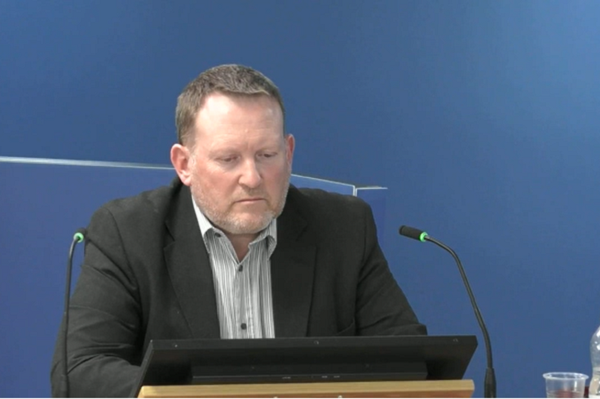
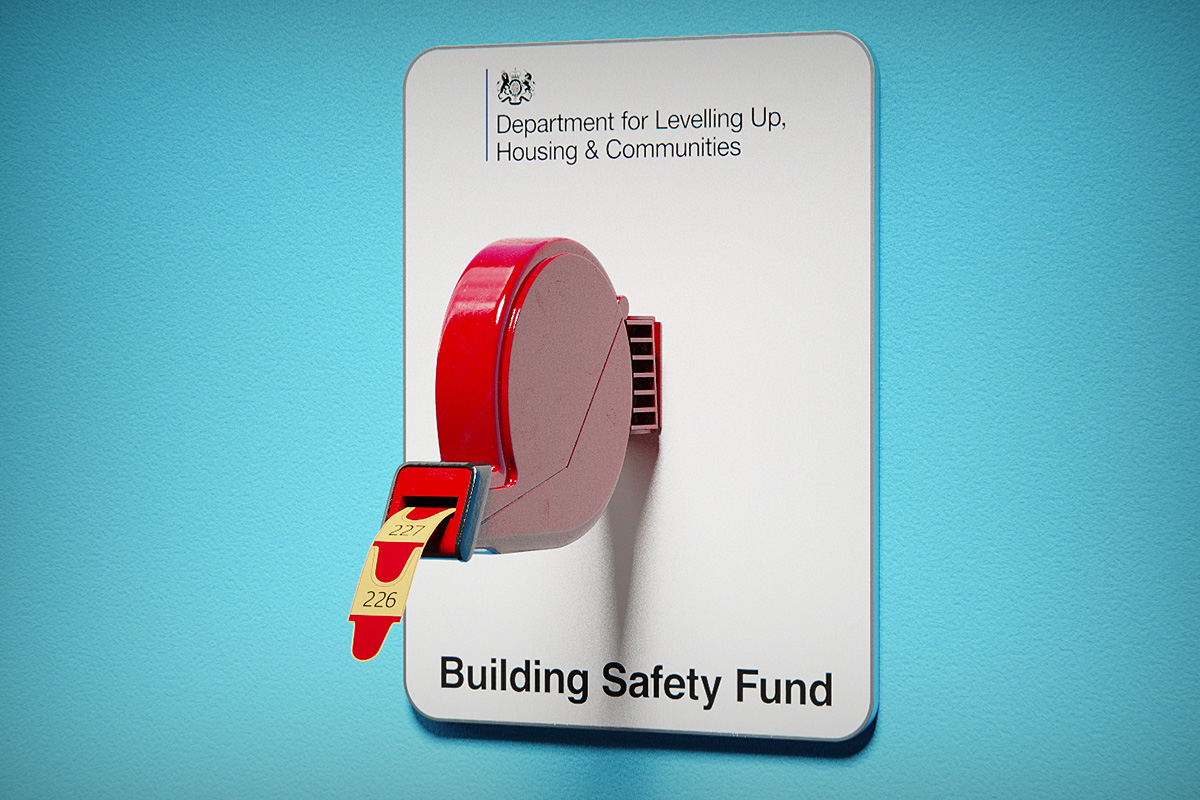
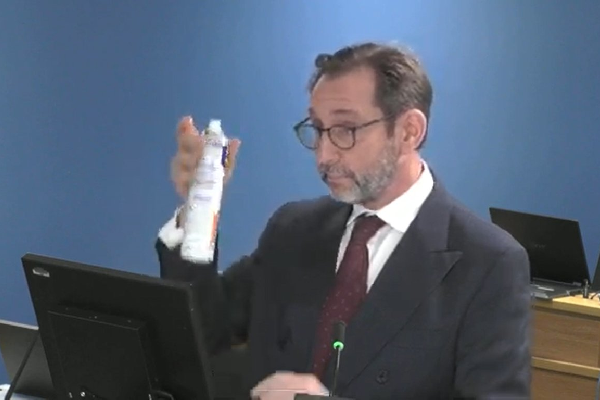
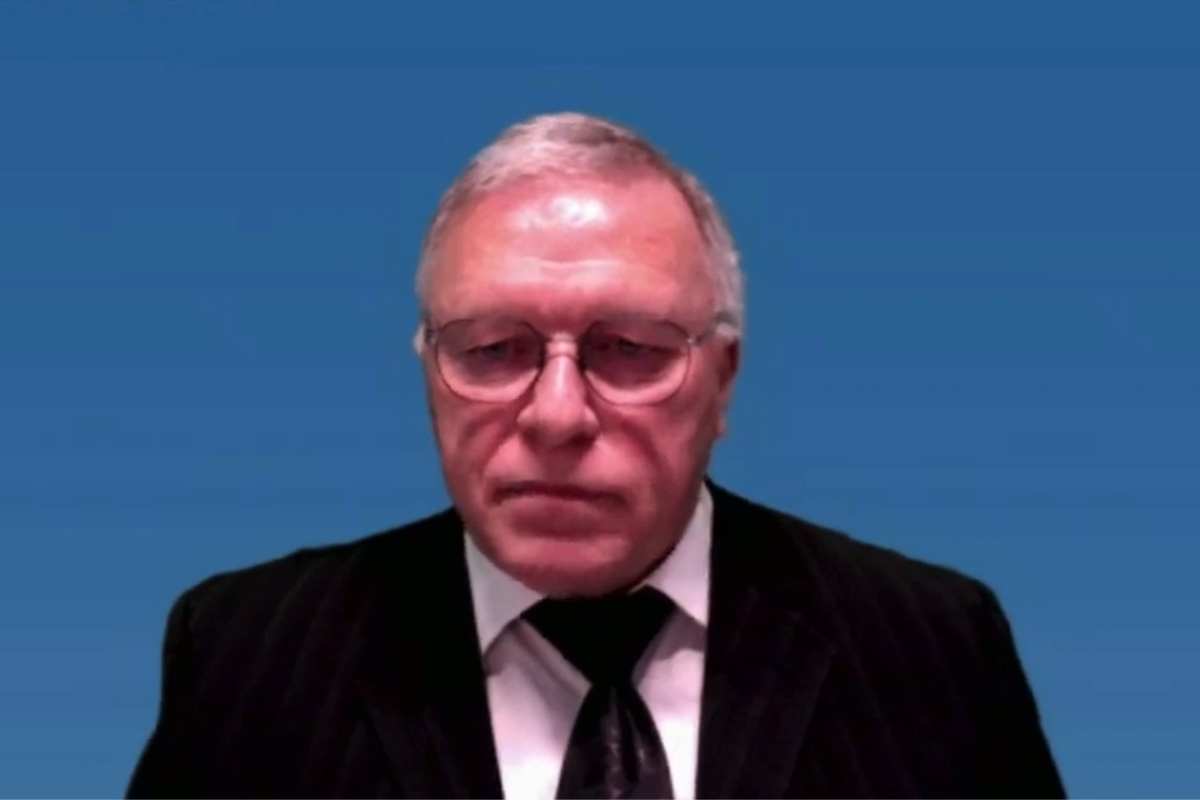
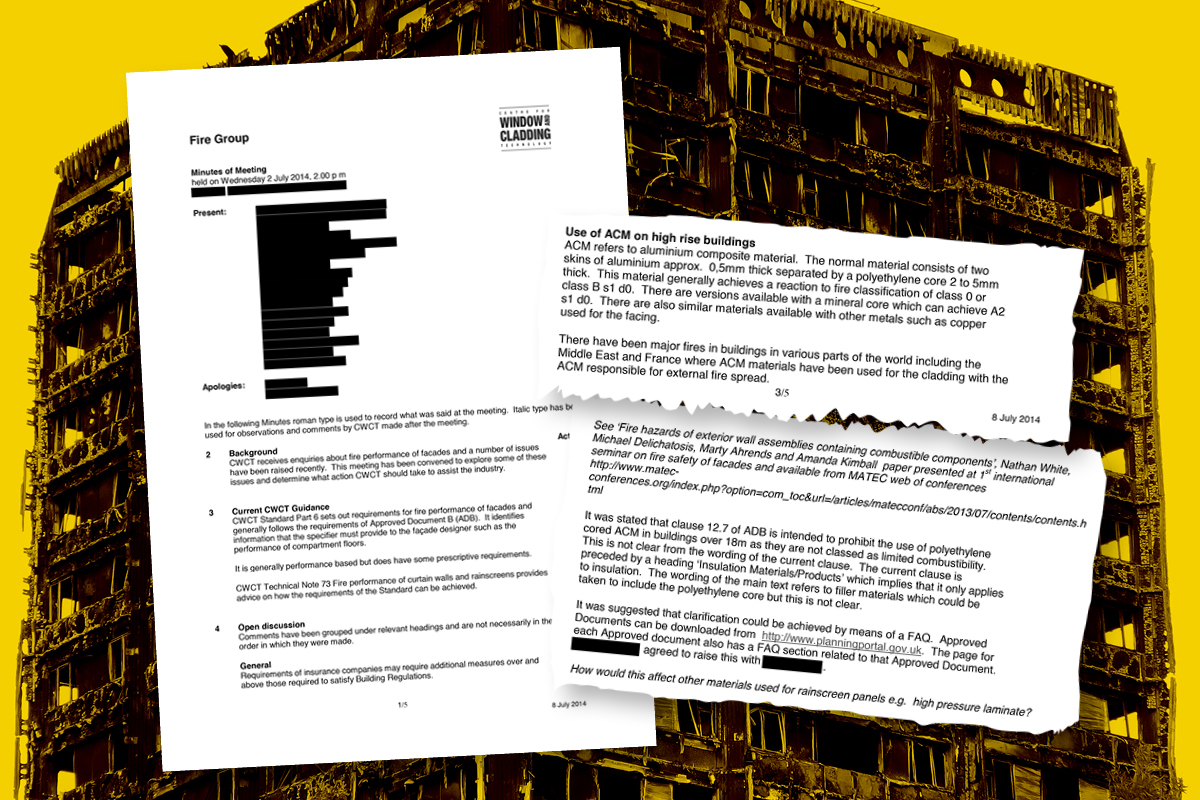
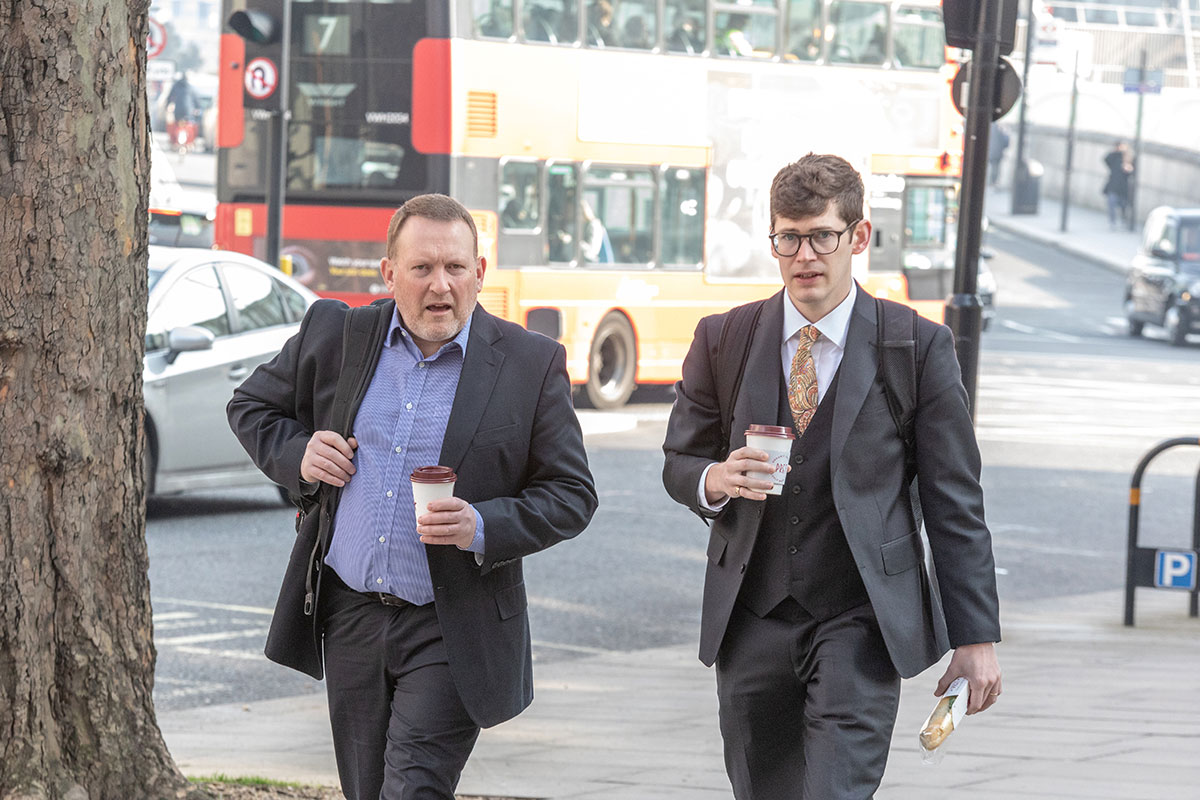
![‘The use of [ACM] would be in contravention of building regulations guidance − and is effectively “banned”’ ‘The use of [ACM] would be in contravention of building regulations guidance − and is effectively “banned”’](https://omghcontent.affino.com/AcuCustom/Sitename/DAM/179/MELANIE_DAWES_1200px_MIN.jpg)
